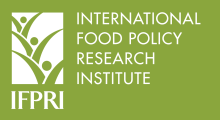Resource information
Effective poverty reduction programs require careful measurement of poverty status. Several studies have shown conceptually that assets reflecting productive capacity form a more robust basis for identifying the poor than do flow variables such as expenditures or income. Nonetheless, little work has empirically compared poverty measurements based on assets and expenditures. This paper uses panel data from Ethiopia to generate an asset-based poverty classification scheme. Regression results are used to estimate an asset index and classify households into categories of structural poverty. Asset index dynamics are also explored to test for the existence of multiple asset index equilibria; evidence of potential poverty traps. Results provide evidence of multiple equilibria in the study sample as a whole as well as convergence at different levels over space, depending on commercialization opportunities and agroecological factors. The asset-based poverty classifications consistently predict future poverty status more accurately than do income-based measures, confirming that the asset-based measure could be used to more carefully target poverty interventions in rural areas and to more accurately assess the impact of those interventions.


